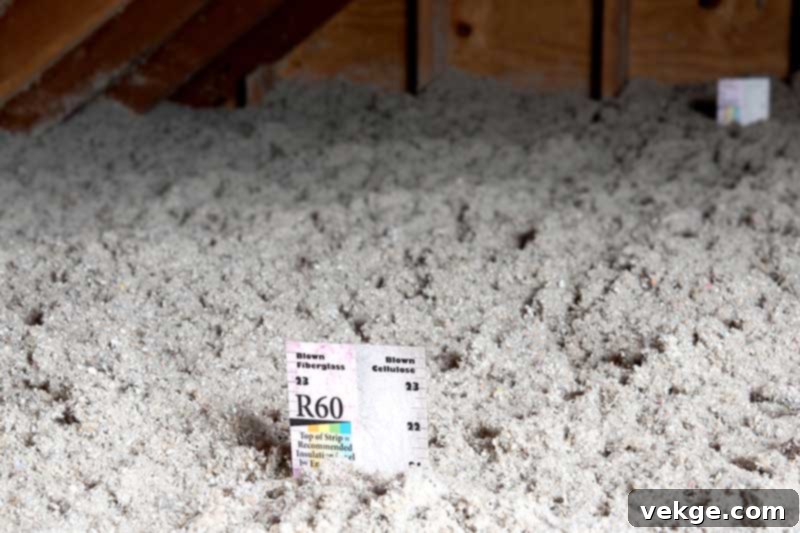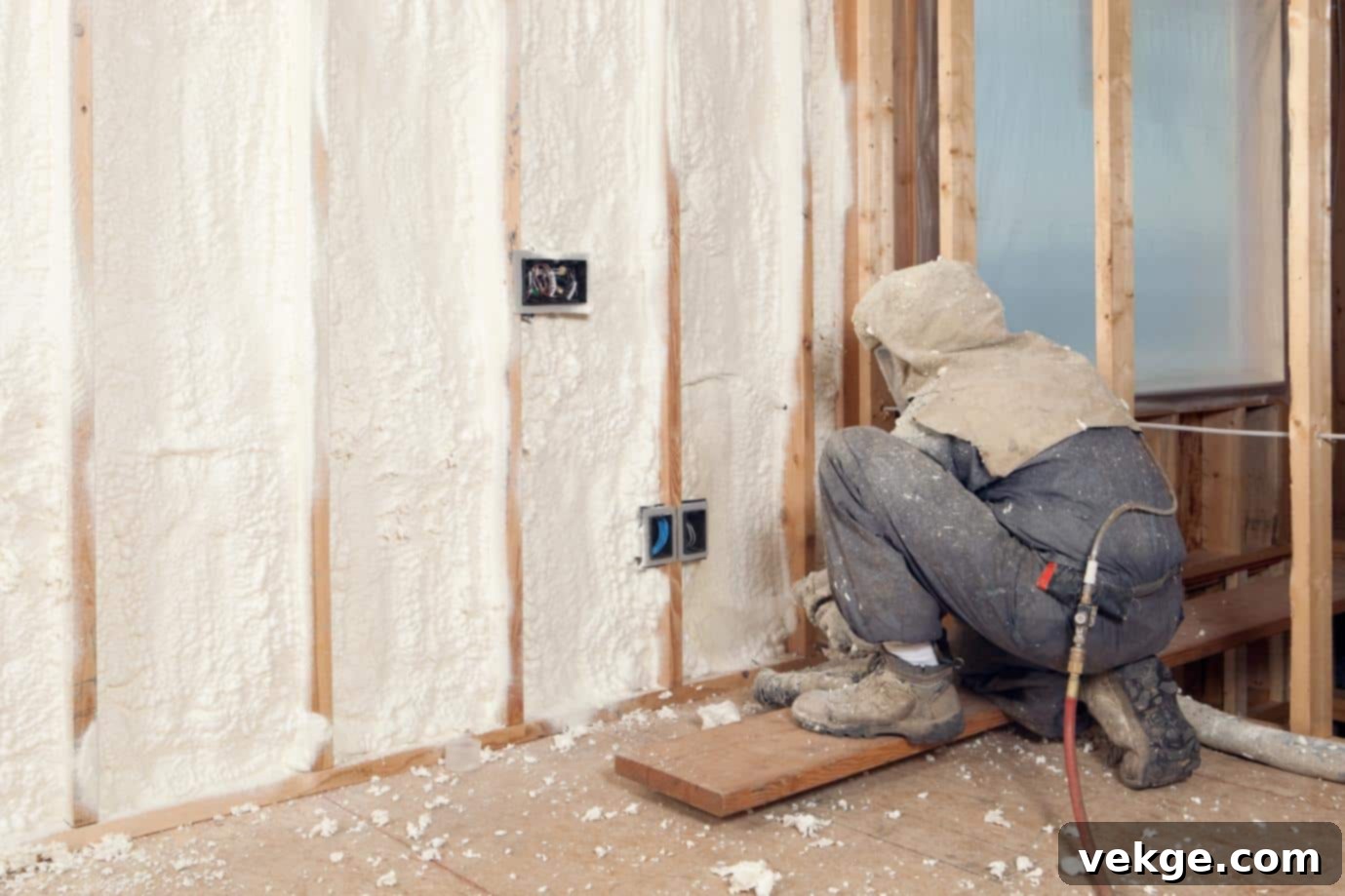Ultimate Guide to Home Insulation: Boost Comfort, Save Energy, and Enhance Value
As a homeowner, you understand that maintaining your property is crucial for preserving its value and ensuring a comfortable living environment. Just like a garage door eventually needs replacing or a fence requires repairs, key components of your home demand attention over time. Among these, your home’s insulation plays a pivotal role, often overlooked until discomfort or soaring energy bills become undeniable. Investing in quality insulation is not just about keeping warm or cool; it’s a strategic decision that impacts your daily life, your finances, and the long-term health of your home.
Imagine a scenario: you’re enjoying a quiet evening, perhaps online gaming or simply relaxing, and you notice an uncomfortable chill or a persistent draft, even though your thermostat is set correctly. This inconsistency in temperature is often a tell-tale sign that your home’s existing insulation might be failing or inadequate. Old, damaged, or insufficient insulation can lead to significant heat loss in winter and heat gain in summer, forcing your HVAC system to work harder, consuming more energy, and escalating your utility bills. Recognizing these signs early can save you a substantial amount of money and prevent further deterioration of your home’s energy efficiency.
Essential Factors to Consider When Choosing Home Insulation

Initially, the process of selecting new insulation for your home might seem straightforward. However, as you delve deeper, you’ll uncover a spectrum of choices and considerations that demand careful thought. Making an informed decision is paramount, as new insulation represents a significant capital investment designed to deliver long-term benefits for your property. To guide you through this crucial process, let’s explore the primary factors you should evaluate.
DIY vs. Professional Installation: A Critical First Step
One of the first decisions you’ll face is whether to tackle the insulation project yourself or hire professionals. If you’re only insulating a small, easily accessible area like a single attic hatch or a minor gap, a DIY approach might be feasible and cost-effective. However, for larger projects, such as insulating an entire attic, walls, or crawl spaces, outsourcing the work to a reputable insulation company is often the wiser choice. Professionals bring expertise, specialized equipment, and the assurance that the job will be done correctly, efficiently, and to code, maximizing the effectiveness and longevity of your investment. They can also advise on the best materials and techniques for your specific home.
Understanding the Different Types of Home Insulation
Once you’ve decided on the installation method, your focus will shift to selecting the right insulation material. The market offers a variety of insulation types, each with unique properties, benefits, and installation requirements, which ultimately influence the overall cost and performance. While some options are more budget-friendly, it’s crucial to weigh their effectiveness and safety against your specific needs. Here are the most common types of insulation you’ll encounter:
- Loose-fill or Blown-in Insulation (e.g., Cellulose, Fiberglass): Made from recycled paper products (cellulose) or fiberglass fibers, these materials are blown into cavities or attics using specialized equipment. They are excellent for filling irregular spaces and often preferred for existing homes as they can be installed without major demolition. Cellulose is known for its eco-friendliness, while blown-in fiberglass offers good fire resistance.
- Sprayed-foam Insulation (Foamed-in-place Insulation): This type of insulation expands upon application, creating an airtight seal that offers exceptional R-value and moisture resistance. Available as open-cell or closed-cell, spray foam is highly effective at reducing air leaks and provides superior thermal performance, though it typically requires professional installation and is at the higher end of the price spectrum.
- Fiberglass Batts: Commonly found in rolls or pre-cut panels, fiberglass batts are made from spun glass fibers. They are a popular and cost-effective choice for unfinished walls, floors, and ceilings. Fiberglass is naturally fire-resistant and offers good thermal performance, but requires careful handling during installation to avoid skin and respiratory irritation.
- Mineral Wool Batts (Rock Wool or Slag Wool): Similar to fiberglass batts, mineral wool is made from natural basalt rock or recycled slag. It offers excellent fire resistance, superior sound dampening properties, and is often denser than fiberglass, providing a higher R-value per inch. It’s a great choice for areas where fire safety and noise reduction are priorities.
Each of these insulation types must be thoroughly evaluated against several key performance indicators to ensure you make the best choice for your home.
The Critical R-Value Rating of Insulation

The R-value rating is perhaps the most important metric when evaluating insulation. It quantifies the insulation’s ability to resist heat flow. Simply put, the higher the R-value, the greater the insulation’s thermal resistance and its effectiveness at preventing heat transfer. Different areas of your home (attic, walls, floors) and different climate zones require varying R-values. For instance, an attic typically requires a much higher R-value than walls due to greater exposure to external temperatures. Always consult local building codes and energy recommendations for your specific region to ensure you choose an appropriate R-value for maximum energy efficiency.
Fire Resistance: A Crucial Safety Factor
Safety should always be a top priority when making home improvements. It’s imperative to select insulation that significantly retards the spread of fire. This characteristic is particularly vital for attic and wall insulation, which are large surface areas within your home. Materials like spray foam and fiberglass insulations are inherently fire-resistant, providing an added layer of safety. Other types, such as loose-fill cellulose and some rock wool products, may require specific chemical treatments to achieve adequate fire-retardant properties before installation. Always verify the fire rating of any insulation product you consider.
Enhancing Comfort with Soundproofing Capabilities
Beyond thermal performance, the ability of insulation to provide soundproofing can be a primary consideration, especially for certain areas of your home. If you’re looking to create quieter bedrooms, a dedicated home office, or a vibrant entertainment space (perhaps where you enjoy cranking up the volume while playing games and searching for no deposit bonuses at Casino Extreme), sound-dampening insulation is invaluable. Denser insulation materials like mineral wool batts excel at absorbing sound waves. However, for superior soundproofing, particularly for blocking both airborne and impact noise, sprayed-in foam insulation or specialized acoustic panels offer the best performance, creating a tranquil indoor environment.
Protecting Your Home Environment from Pollutants

A healthy home environment is free from external pollutants and allergens. Quality insulation plays a significant role in achieving this. By creating a tighter building envelope, good insulation reduces air infiltration, thereby minimizing the entry of dust, pollen, and other airborne contaminants. This is particularly effective when insulation is properly installed around HVAC system ductwork, preventing air leaks that could pull in unfiltered air from unconditioned spaces like attics or crawl spaces. Fiberglass and rock wool insulations, for example, are suitable choices for contributing to better indoor air quality by sealing your home effectively against outside elements.
Understanding the Comprehensive Benefits of Modern Insulation
When you decide to upgrade or install new insulation, you’re not just buying a material; you’re investing in a host of improvements for your home and lifestyle. The benefits derived from a well-insulated home are extensive and impactful:
- Superior Temperature Control: Achieve consistent and comfortable temperatures throughout your entire home and in individual rooms, eliminating hot and cold spots.
- Significant Energy Efficiency: Dramatically cut your energy consumption and, consequently, your monthly utility bills by reducing the workload on your heating and cooling systems.
- Effective Noise Reduction: Create a quieter, more peaceful indoor environment by minimizing external noise from traffic, neighbors, and weather, as well as internal noise between rooms.
- Improved Indoor Air Quality: Control exposure to outside pollutants, allergens, and moisture, contributing to a healthier living space for you and your family.
- Enhanced Home Value: A well-insulated home is more attractive to potential buyers, adding tangible resale value and a competitive edge in the real estate market.
- Reduced HVAC Wear and Tear: With less strain on your heating and cooling systems, they will likely last longer and require less maintenance.
Evaluating the Cost of Insulation: An Investment Perspective
At the final stage of your selection process, your budget will naturally become a primary concern. The cost of home insulation varies widely depending on the type of material, the R-value, the size of the area to be insulated, and whether you opt for DIY or professional installation. While some insulation options are indeed more expensive upfront, it’s crucial to view this expenditure as a long-term investment. The decision-making process should focus on maximizing the benefits you can derive at the most reasonable price point, considering the return on investment through energy savings and enhanced home value.
For example, rock wool batts, particularly those mixed with recycled paper products, tend to be among the most budget-friendly options, offering a good balance of thermal performance and sound dampening. On the other end of the price spectrum, high-performance materials like sprayed-in foam insulation come with a higher initial cost but deliver unparalleled R-values and air-sealing capabilities, often resulting in the most significant energy savings over time. Set your priorities – whether it’s initial cost, R-value, specific performance features, or environmental impact – and make a decision that aligns with your long-term goals for your home.
Conclusion: Making the Right Investment for Your Home’s Future
Choosing the right insulation for your home is a significant decision that will impact your comfort, energy consumption, and property value for years to come. If you opt to hire an insulation installation professional, leverage their expertise to guide you towards the best home insulation options tailored to your specific needs and climate. They can provide valuable insights into materials, R-values, and installation techniques that might not be obvious to the average homeowner.
By making informed choices and the right investment in quality insulation, you can expect this home improvement project to last a considerable amount of time. Depending on the type of insulation you choose and proper maintenance, new home insulation is typically something you should only have to do once every 7-10 years, and often much longer for high-quality installations. It’s an investment that pays dividends in comfort, savings, and peace of mind.
